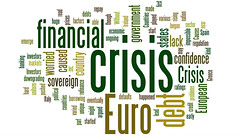It’s funny to me how so many organizations across so many vertical industries—from nonprofits to technology—share the same issue of not speaking their customers’ language. What do I mean by that? I mean employing tone, a voice, jargon, value propositions and marketing messages that just do NOT resonate with the people you most want to connect with.
Speaking your customers’ language can mean different things for different industries. It means if you are a nonprofit like United Way Suncoast, you want to engage with three types of audiences: people in need, corporations that can donate to your cause, and prospective members, and your website better have a little “something” (read: content) for every audience target you have. You also need to be clear that you understand who your customers are and what they could possibly want from you—in about 5 seconds or less.
If you are speaking to a technology reseller, speaking their language means understanding that your brand may be one of 15 overall brands he represents and one of four brands for your specific product. That means it is going to take you a little longer to get his attention, have him understand your key differentiators, persuade him to sell yours versus the other three in your category, and, finally, actually go out and make the sale, without that cumbersome jargon technology companies seem to love to use.

Then, there’s the notion of tone and voice. Are you overly business-like or clinical in your communications about an illness where empathy and emotion would be a better approach? I helped The Promise Foundation, a charity dedicated to awareness/prevention of melanoma, wrap their messages in a blanket of empathy and emotion because that was appropriate to their DNA—business speak was not.
Are you overly technical where a straightforward business value messaging approach would be far more effective? If your target market audience is technical, allow yourself to take on that voice. If you are Avaya, and need to speak to CFOs, CEOs and the rest of the C-suite, you had better make the business case and speak to pain points and business ROI.
Speaking your customers’ language also means not bombarding your customers with a lot of industry-speak in an attempt to look smart. Your message can get lost in a sea of buzzwords or crash on the rocks of technical jargon. We often become so familiar with our products and services that we lose touch with the laymen’s terms that our customers are using. When you take your car to the mechanic, he may be talking about bearings and tie rods, but all you want is for the car to stop making that infernal clunking noise.
Remember, you will earn the trust of your customers when you can communicate with them the same way that they communicate with each other.
Not sure how to speak your customers’ language? The first step is easy: just to listen to them! Your customers are talking about their challenges and problems—are you listening to them? Read industry publications and blogs and look for recurring words and phrases. Go to customers’ industry events and listen to how companies there describe challenging situations and make your communication fit those needs. Join LinkedIn groups relevant to your customers’ business and monitor the discussions.
As a marketing consultant, I am often asked, “Can you just make us ‘look better’? I’ve had CEOs of organizations ask us to “make this stuff prettier.” As if an aesthetic overhaul of poorly thought through marketing strategies and communications would simply get miraculously better if they only “looked good.” Hmmm… nope, I think you have the wrong girl here, my friend. I don’t think I’m going to add value if I am helping you pick out the color of the siding for the house with a crumbling foundation.
We need to remember to build that foundation very carefully. In marketing, before we talk about pretty pictures, we need to build our strategies and communications on and around our prospective customers. Reaching your customers where they are is only half the battle: once you’re there, you have to speak their language too.





